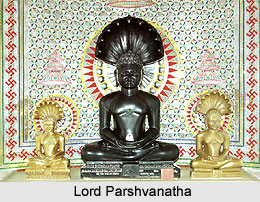 Shri Vahi Teerth located in Madhya Pradesh is a Jain pilgrimage centre. The teerth kshetra is located in the Vahi village. The temple is dedicated to Lord Parshvanatha, the twenty-fourth Jain Tirthankara.
Shri Vahi Teerth located in Madhya Pradesh is a Jain pilgrimage centre. The teerth kshetra is located in the Vahi village. The temple is dedicated to Lord Parshvanatha, the twenty-fourth Jain Tirthankara.
History of Shri Vahi Teerth
According to history Shri Vahi Teerth dates back to the ancient times. As per reference the teerth kshetra was earlier a very rich and prosperous city. It is said that the temple was built by King Samprati of the Maurya Empire. As the teerth is located in Vahinagar, the idol is known as Vahi Parshvanatha. This place has been visited by many Rev Saints and is thus regarded to be sacred. The idol of Lord Parshvanatha is believed to possess miraculous powers. Devotees from far off places visit the temple to offer their prayers. It is said that if the Lord is worshipped with full devotion it fulfils the desires of the pilgrims
Temple of Shri Vahi Teerth
The temple of Shri Vahi Teerth houses the idol of Bhagwan Vahi Parshvanatha. The shrine has been marvellously decorated with striking intricate designs that infatuates the pilgrims. It reflects the artistic and creative skills of the craftsmen of the ancient period. The temple is adorned with beautiful pinnacles that enhance its beauty. It also has a cellar. The idol of the Lord is almost 58 cm in height and black in colour. It is seated in a padmansana posture and is surmounted by seven hoods. The idol has been beautifully carved from a single stone and looks very fascinating. The smiling face of the Lord looks very calm and serene. Under the idol of the Lord there an image of a tiger seated in a cross-legged posture.
The Temple of Shri Vahi Teerth organises many annual gatherings and functions. There are provisions for dharamshalas or rest houses for the pilgrims. Apart from there is an upashraya here. These are well equipped with all modern facilities. The temple is enclosed by scenic beauty that mesmerises and fascinates the pilgrims. The calm and tranquil environment and the surrounding greenery make it a suitable place for religious activities. The kshetra is well connected to road, rail and air. Taxi services and bus services are easily available here. This teerth is at a distance of 5 kilometers from the Pipaliya Mandi station and 16 kilometers from Mandsaur.




















